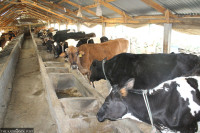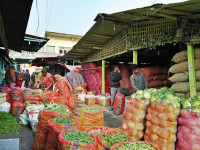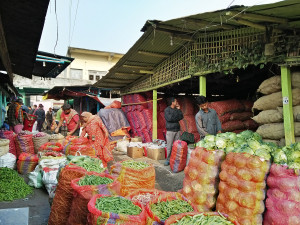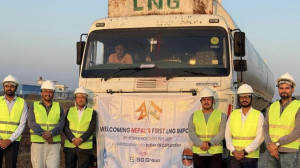Money
Highway to Everest is paved with hope
Locals say the connection will make the Everest region easily accessible and bring more economic opportunities.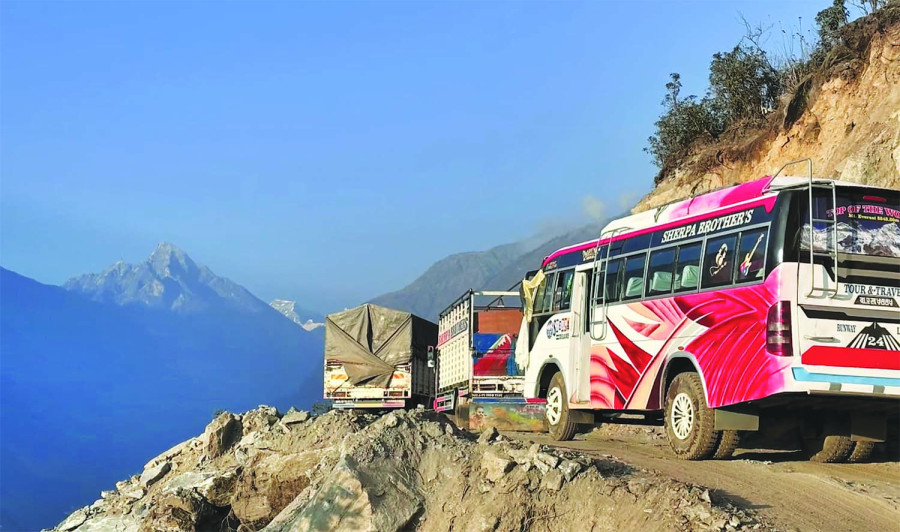
Sangam Prasain
In November 2011, over 3,000 tourists were stranded in Lukla after adverse weather conditions halted flights for over a week. This caused a great uproar among tourists and the locals as food stocks were depleting.
Tourists were forced to return to Kathmandu by helicopter, paying up to $500 per person instead of $180 for an aeroplane ticket. During the tourist season in spring and autumn, hundreds of tourists are often stranded at Lukla airport as no flights can land due to bad weather and high winds.
Problems intensify during the winter and monsoon seasons, though the areas at those times receive almost no tourists. In bad weather, trekkers can also walk up to Jiri, retracing the footsteps of Edmund Hillary and Tenzing Norgay Sherpa during their historic ascent to the top of the world on May 29, 1953.
The walk from Jiri to Surkhe, just below the Lukla Airport, takes 12 days.
The government then decided to open a track to the Everest region. The project, dubbed the Highway to Everest, started in 2014. However, the 2015 earthquake stopped it.
After the 2017 elections that installed local governments under a federal dispensation, Khumbu Pasang Lhamu Rural Municipality took the initiative to push the road project.
Nearly a decade on, last week, the Khumbu region became accessible by road.
On January 4, Prime Minister KP Sharma Oli inaugurated the dirt motorable road up to Surkhe. The road will end in Chaurikharkha, which falls between Lukla and Namche Bazaar.
“This is a monumental development for the Everest region,” said Jagat Prasad Bhusal, chief administrative officer of the Khumbu Pasang Lhamu Rural Municipality. “The road will significantly reduce transport costs for trekkers to the Everest region while bringing supplies for the locals.”
Most importantly, it has opened the door for domestic trekkers, who mostly found the Everest trek an expensive affair. According to Bhusal, the development would cut the reliance on air travel to Lukla.
The road promises reduced transport costs, improved supply logistics, and an anticipated tourism boom, with visitor numbers projected to increase significantly.
While local communities celebrate the economic opportunities, environmentalists and mountaineering purists express concerns about potential ecological impacts.
Increased footfall could strain resources, drive up pollution, and disrupt the pristine environment.
The Himalayan Trust, a charity established by Edmund Percival Hillary, one of the first to summit Mount Everest, built the airport in Lukla in 1964. It began as a modest airstrip on flat farmland to facilitate the transport of supplies for the Himalayan Trust’s schools and hospital projects.
A 25-minute flight lands at the tiny airport, which is precariously perched on a mountain ridge. For decades, it has been the ultimate adventure for many.
Since January 4, buses and jeeps have been transporting passengers.
Locals say this historic feat will transform the accessibility of the world’s highest peak, opening new opportunities for tourism, trade, and local communities.
The newly built track, a 64-kilometre stretch carved into the mountains with an 8-metre width, connects Surkhe to Salleri at an altitude of approximately 2,200 metres, and is being hailed as a feat for Nepali engineers.
Dip Kumar Basnet, municipal sub-engineer, said the two-lane Salleri-Surkhe track is completed, and the contract for another 5 kilometres of Surkhe-Chaurikharka has been awarded.
Salleri is the headquarters of Solukhumbu district. The Kathmandu-Khurkot-Ghurmi-Salleri road is around 270 km long.
“If the road is blacktopped, people will be able to drive to the Everest region, crossing highlands and panoramic mountain ranges within a day from Kathmandu,” according to Basnet. “Once paved, the existing 8-hour Salleri-Surkhe drive will be reduced to 5 hours.”
Since last week, 55 Mahindra Bolero jeeps and three buses have served the route. The bus charges Rs3,000 from Salleri to Surkhe, while the jeeps charge Rs3,500 per person.
Currently, the fare charged by planes and buses is not much different, but according to locals, once competition starts, bus fares may drop significantly.
The bus fare has decreased from Rs4,000 per person to Rs3,000 within a week.
The two-way airfare for Nepalis from Kathmandu to Lukla is Rs10,500. However, it is hardly available for Nepalis during the trekking season in spring and autumn. As airlines mostly sell tickets to dollar buyers, they are not easily available to domestic flyers.
The road overcomes treacherous terrain, reaching 3,000 metres in Patale, and brings motors to one of the planet’s most extreme topographies.
Local businesses, especially those related to tourism, anticipate more economic activity as the road enhances connectivity and reduces logistical challenges.
Additionally, it provides a crucial supply line for locals, bringing goods and services more efficiently.
Accessible only by air, the Everest region is among the world’s most expensive places to visit. All supplies had to be flown in or carried on people’s backs, deterring potential tourists, especially domestic ones.
A single cooking gas cylinder costs around Rs10,000 in the higher passes, as porters and mules transport them. A trekker must shell out around Rs300 for a cup of tea. Air freight charges from Kathmandu to Lukla are around $1.50 (about Rs200) per kg.
“In the Surkhe area, costs are already down,” said Regmi, the chief administrator of the rural municipality. In the area, the price of an LPG cylinder has come down from Rs 4,000 to Rs2,600. “We can now buy oranges at Rs100 per kg, down from Rs500 per kg.”
“The road will bring tens of thousands of people to the Everest region as the link will make commodities and travel cheaper,” said Basnet.
Over 50,000 foreign trekkers and mountaineers visit the region annually, and tourism entrepreneurs believe the road access could push that number close to 500,000, including domestic and international tourists.
These numbers, however, could damage the fragile environment of the Khumbu region.
The development has sparked a debate among environmentalists and mountaineering purists. Critics argue that the road may lead to environmental degradation in the fragile Himalayan ecosystem.
Authorities have assured stakeholders of stringent environmental safeguards to mitigate these concerns. The municipality plans to keep the Everest region emission-free by allowing only electric vehicles, but officials said the plan looks unfeasible.
Local authorities are working to limit commercial helicopter operations in the Everest region to ensure long-term preservation of the world’s most iconic mountain.
The Sagarmatha National Park has flagged immediate concern of severe noise pollution caused by frequent helicopter flights over the area. Conservation officers said there are more than 6,000 chopper flights above the national park in spring and autumn.
The noise, caused by low-flying choppers, disturbs not only schools and offices in the region but also animals, which rely on the park’s relatively undisturbed natural environment.




 15.12°C Kathmandu
15.12°C Kathmandu

